Van Gogh’s 16 Famous Paintings and the Stories Behind Them
Van Gogh, the most influential painter of the 20th century, died at the age of 37. During his short life and career, he only sold one painting for a price that was considered a gift.
Van Gogh’s paintings offer a glimpse into his turbulent life and unique perspective on the world. This article will introduce 16 of Van Gogh's most famous paintings and the stories behind each work to help you understand the profound meaning that Van Gogh wanted to convey.
Sunflowers (1888)
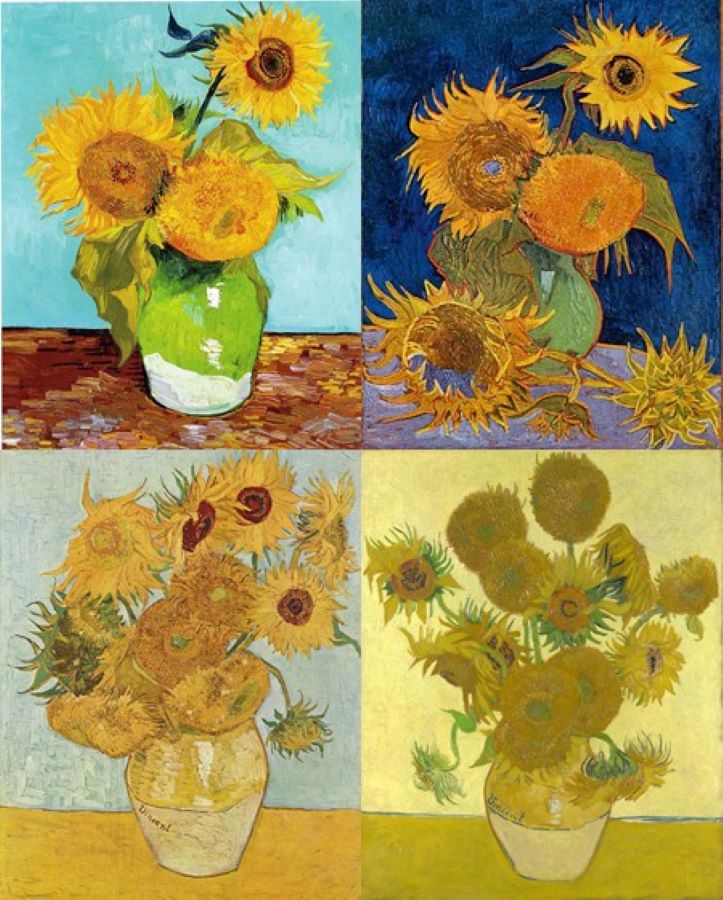
Van Gogh finished painting 4 masterpieces of sunflowers in just 6 days. He kept his emotions and alertness during those 6 days with coffee and wine.
Researchers say that when he painted sunflowers, Van Gogh was also in the best mood, those were rare happy moments in his life. For Van Gogh, yellow is a symbol of sunlight, warmth, friendship, joy, and happiness.
In Dutch literature, sunflowers are a symbol of sacrifice, devotion, and loyalty. Van Gogh's series of sunflower paintings depicts flowers from blooming to withering, also a metaphor for the cycle of life and death.
Van Gogh seemed to be fascinated by sunflowers, as evidenced by the large number of paintings he made of them and the descriptions he wrote in letters to his brother and friends.
In 1888, Van Gogh wrote: "I am working with the enthusiasm of a man from Marseilles eating bouillabaisse, which shouldn’t come as a surprise to you because I am busy painting huge sunflowers." In the same letter, he also dreamed of working with his friend Paul Gauguin in a studio and planned to decorate the walls with giant sunflower paintings.
Portrait of Dr. Gachet (1890)
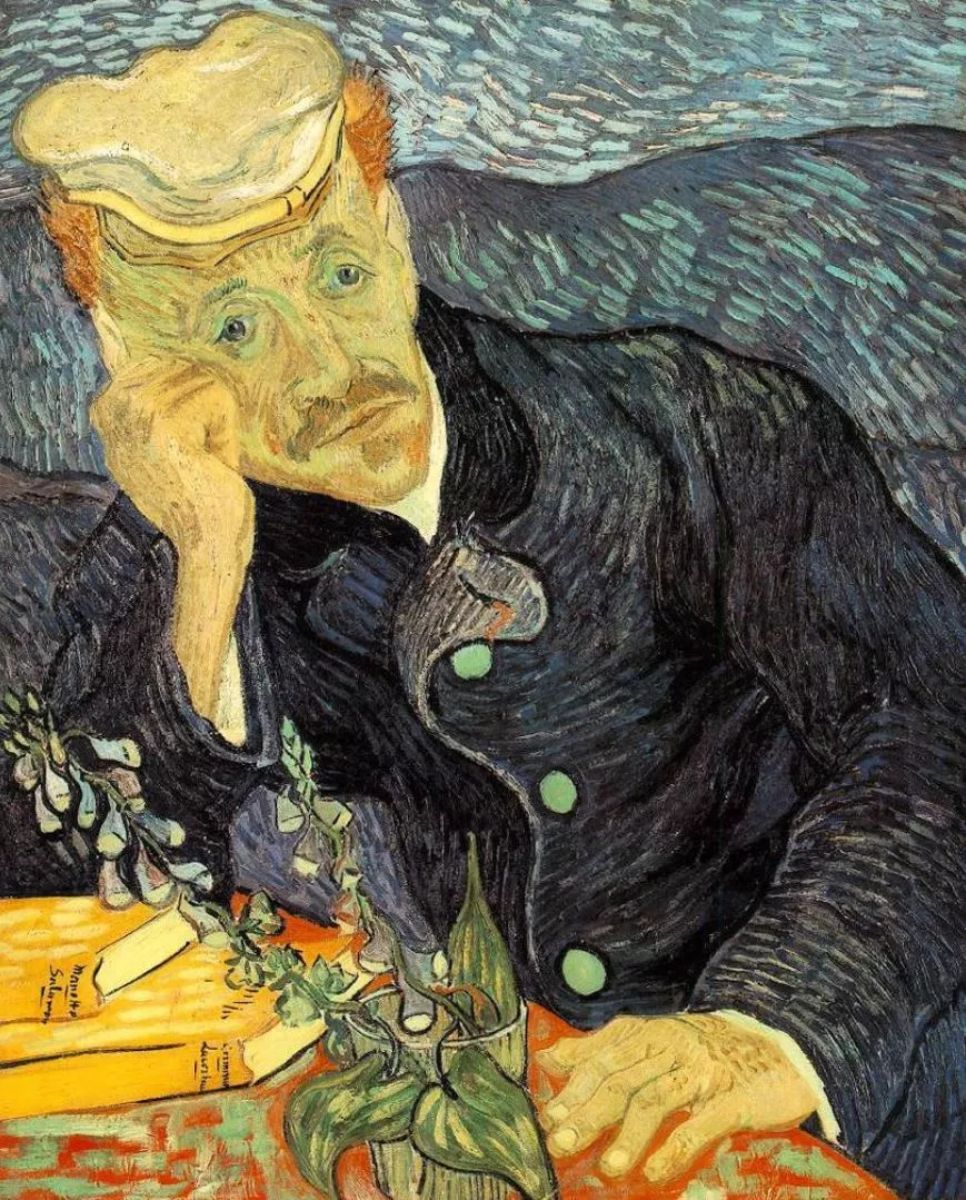
"Portrait of Dr. Gachet" is one of the most famous paintings by the Dutch artist Vincent Van Gogh. Dr. Paul Gachet in the painting is the person who took care of Van Gogh in his last years.
At first, Van Gogh's first impression of Dr. Gachet was not good. Writing to his brother, he said: "I think that we must not count on Dr. Gachet at all. First of all, he is sicker than I am, I think, or shall we say just as much, so that's that. Now when one blind man leads another blind man, don't they both fall into the ditch?".
However, in the following letter, Van Gogh said: "I have found a true friend in Dr. Gachet, something like another brother, so much do we resemble each other physically and also mentally."
The intimacy found in Dr. Gachet prompted Van Gogh to create this melancholy portrait. For Van Gogh, the image of Dr. Gachet in the painting seems to be “frowning at those who look at this painting”. It is a face that carries “the sadness of the generation”.
Old Man in Sorrow (On the Threshold of Eternity) (1890)
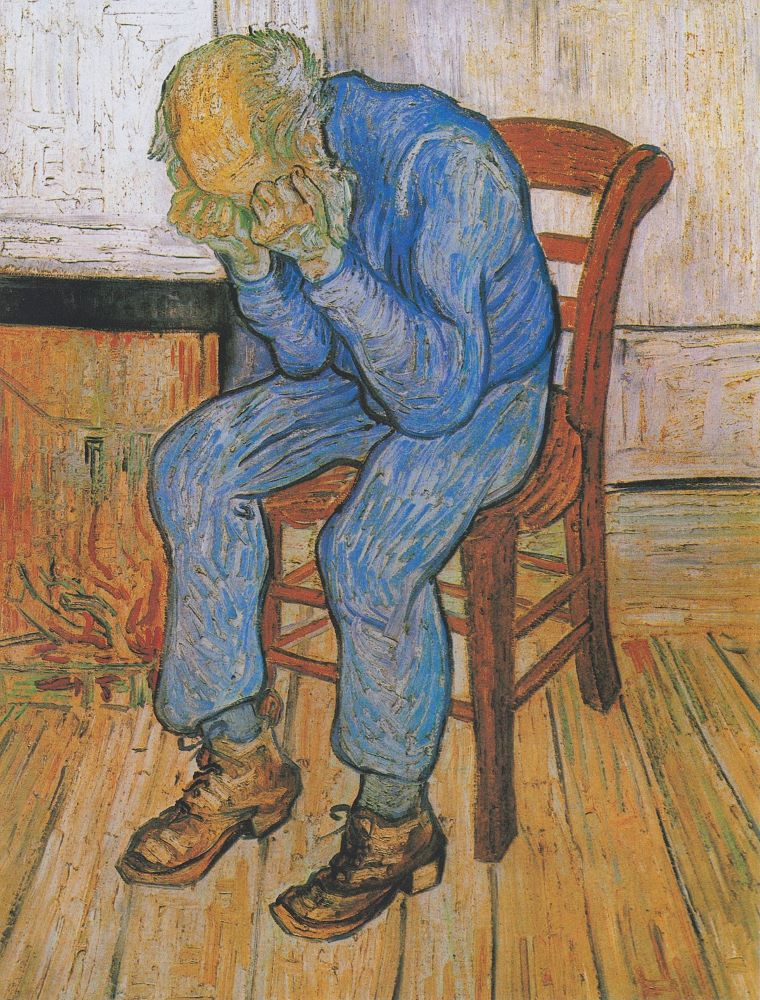
Old Man in Sorrow was made when Van Gogh began to recover from a severe depression, which was also two months before his death - a mysterious death that at the time was concluded to be a suicide.
The pose of the old man in the painting had impressed Van Gogh many years before. The artist had made many pencil sketches depicting this pose, expressing sadness and extreme disappointment.
For Van Gogh, despite his great efforts, according to him the paintings still could not fully capture the beauty of the image he saw in reality: Besides God and eternity, there are also beautiful expressions like this. This old man did not know that in a moment of silence sitting in the corner of the room, he had created a precious, beautiful, emotional image, making him feel very close to God's eternal home.
For this work, Van Gogh had a lot of religious feelings. Although the main character's face was hidden, the viewer could still clearly feel the sadness and bitterness. That is probably why Van Gogh once named the painting "On the Threshold of Eternity" - every time he saw sadness, Van Gogh also thought about God and eternity.
Starry Night (1889)
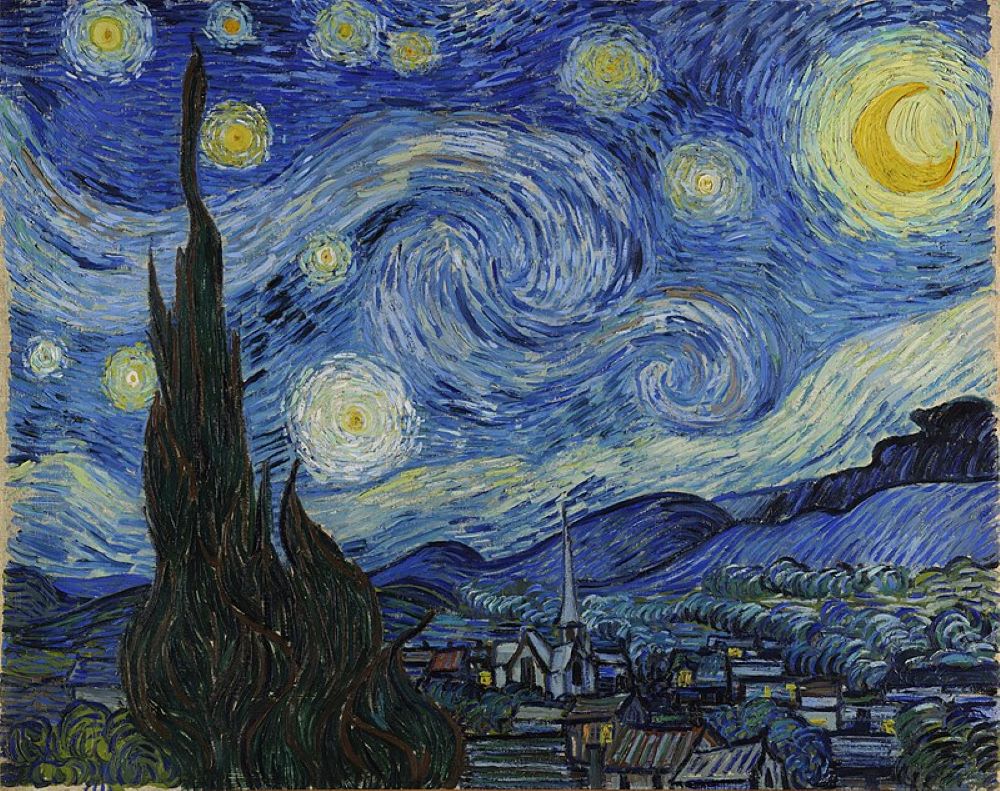
Starry Night depicts the scene outside Van Gogh's hospital room in a mental hospital in the South of France. This scene was observed through the hospital window at night, however, Van Gogh painted it from memory during the day because no patient was allowed to "no sleep" at night.
“The Starry Night” is one of Van Gogh’s most famous works, marking an important turning point in his painting career when Van Gogh began to give more space to his imagination.
Van Gogh's swirling and rolling brushstrokes in this painting create a sense of movement and liveliness. The yellows and oranges interspersed with the blues create a strong contrast, highlighting the beauty of the painting. The main highlight is the light from the large star in the center, illuminating the entire scene and creating a mythical space.
“The Starry Night” is also a controversial work among critics, there are two schools of thought: one school believes that Van Gogh painted the starry sky with his imagination, the other school believes that Van Gogh accurately depicted the positions of the stars he saw in the sky, that he did not paint with the ease of his imagination.
Many critics even believe that Van Gogh painted the positions of the stars based on a biblical passage in the Old Testament, describing a dream of Saint Joseph.
Olive Trees (1889)
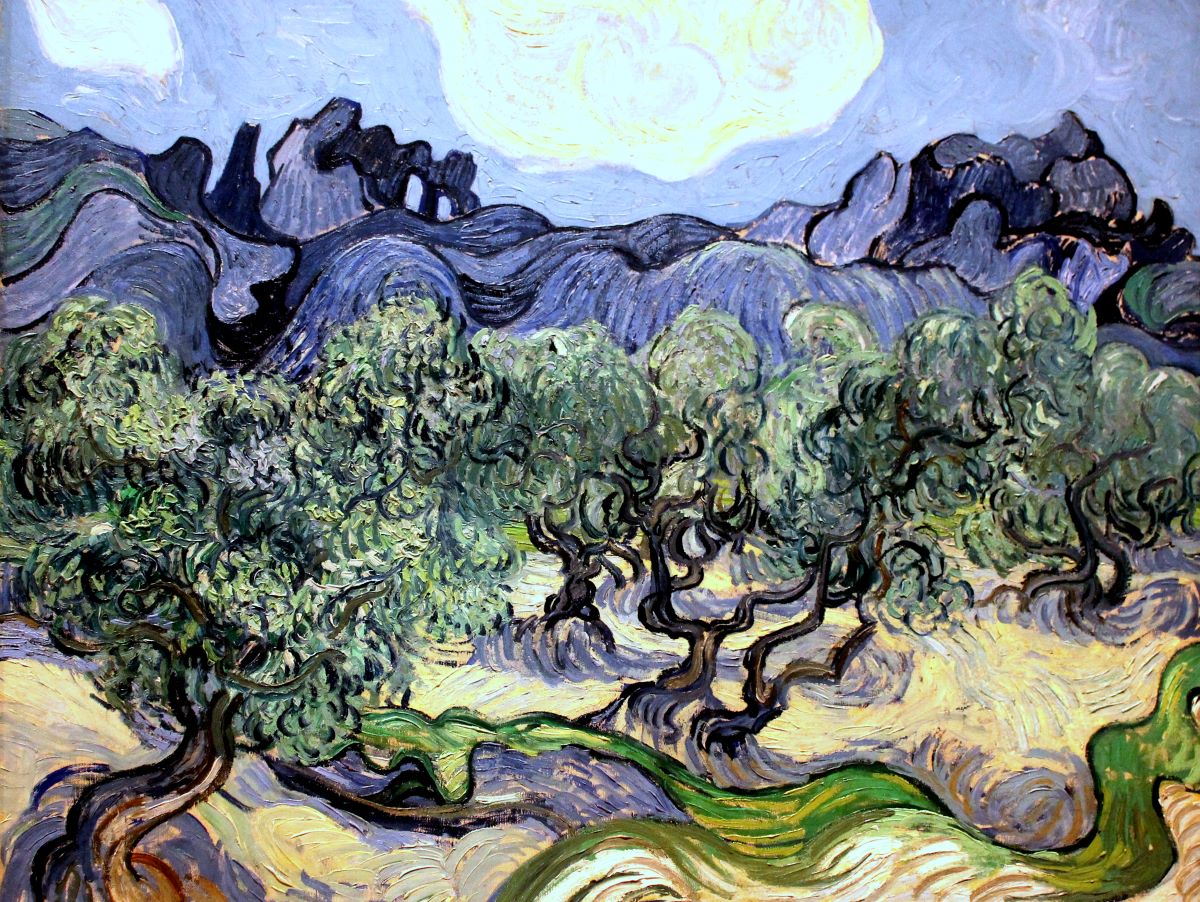
Van Gogh painted at least 18 paintings of olive trees during his treatment at a mental hospital in the South of France. His window then opened onto an olive grove. The Olive Trees have always been considered a companion painting to The Starry Night.
“Olive Trees” depicts the daytime scene while “Starry Night” depicts the night scene seen from Van Gogh’s hospital room window.
Paintings depicting olive trees have an important meaning for Van Gogh, expressing the philosophy of life, the sacredness and holiness in the cycle of life, and the sense of God.
During his lifetime, Van Gogh often found relaxation and solace when he was in harmony with nature. When he painted the series of paintings of olive trees, he was also starting to get seriously ill, often facing mental disorders.
The Night Café (1888)
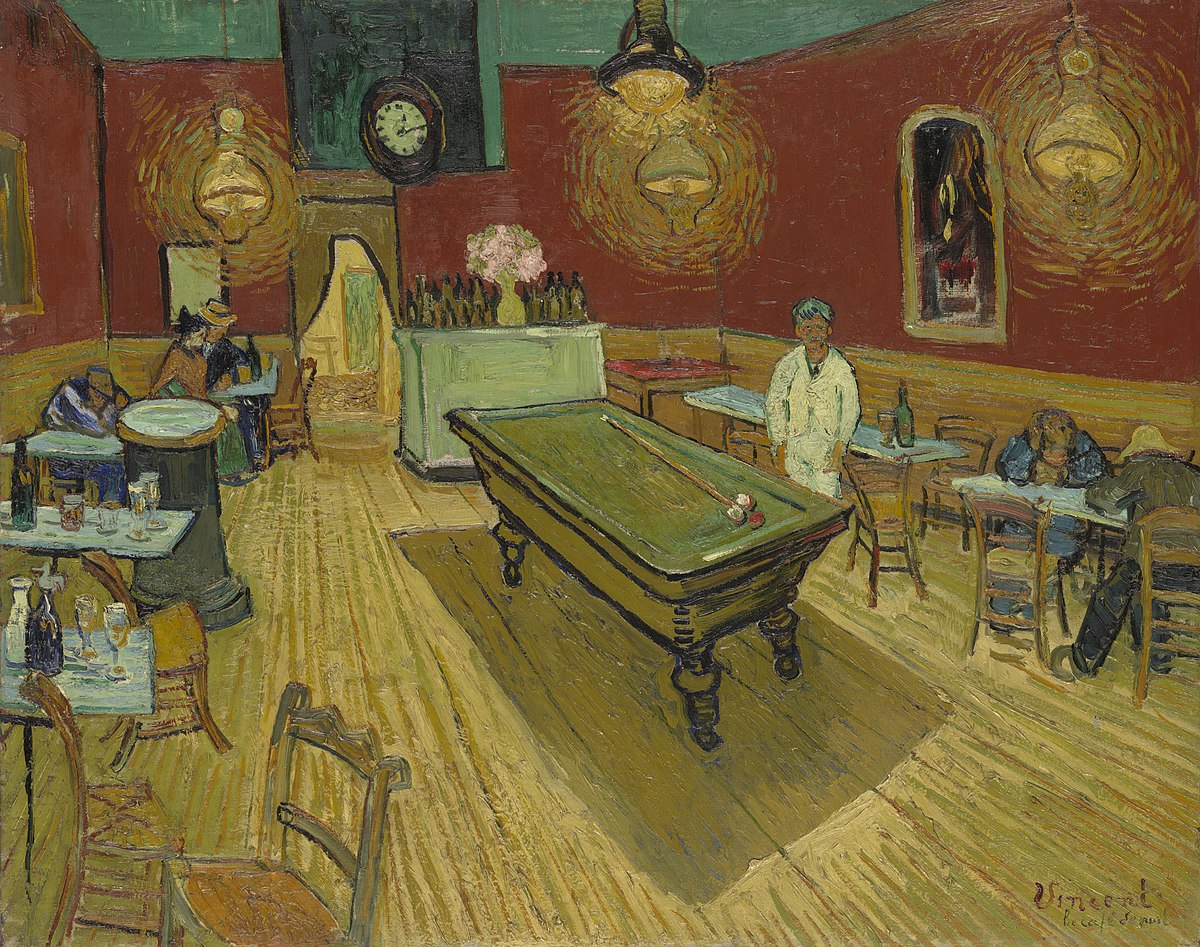
To this day, when visitors visit the French city of Arles, they can still find the café that Van Gogh depicted in his famous painting with the same decoration.
The reason Van Gogh chose to paint this café was that it was lit up every night, thanks to which, he would have “ a night picture without any black in it”. Usually, night scene painters only sketch the scene and turn the sketch into a painting during the day, but Van Gogh decided to paint directly at the “scene” regardless of the darkness.
Because it was dark, Van Gogh could not choose the exact color. However, he thought it was an interesting mistake because “this was the only way to escape from the traditional night paintings”.
In The Night Café, Van Gogh always shows a sense of spirituality and respect for God, which is a constant need that appears every time he holds a brush.
With this painting, Van Gogh initially intended to go down to the night street to depict the stars, then he saw the scene at the cafe and suddenly had the idea of depicting living people appearing under the eternal cover of the starry sky.
Self-Portrait (1889)
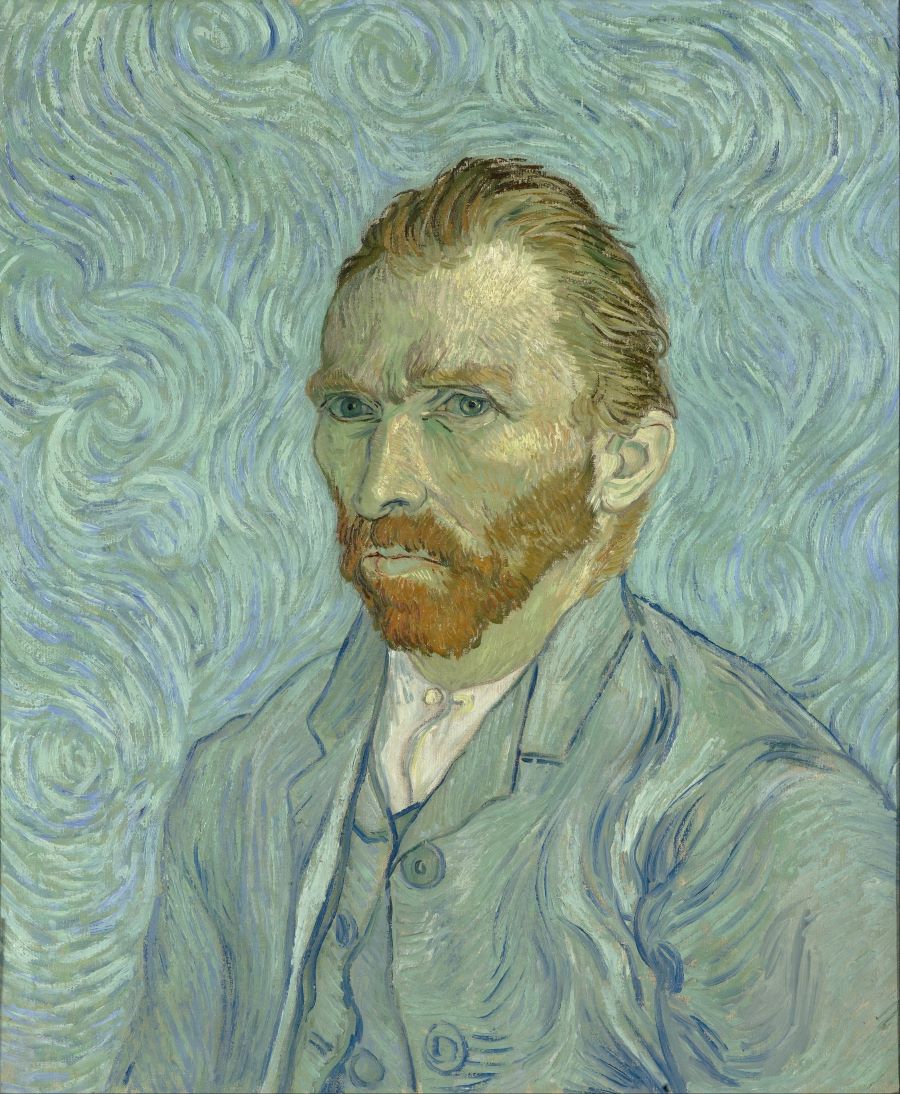
The 1889 Self-Portrait is often considered Van Gogh's last portrait, as well as one of the most iconic works depicting the artist. It is also depicted with the same psychedelic strokes as The Starry Night, giving a sense of chaos and pressure.
In fact, there are many reasons why Van Gogh often painted self-portraits. One of the less talked about reasons is that he could not afford to pay models to sit for hours on end. Although he was not extremely poor, Van Gogh often faced financial difficulties, which pushed him to seek more creative and self-sufficient solutions in his art.
The story behind this work also tells the story of Van Gogh's journey, especially his mental health. In a letter to his brother about the self-portrait, he admitted that his health was improving, but the painful truth was that things were never really okay.
Self-Portrait with Bandaged Ear (1889)
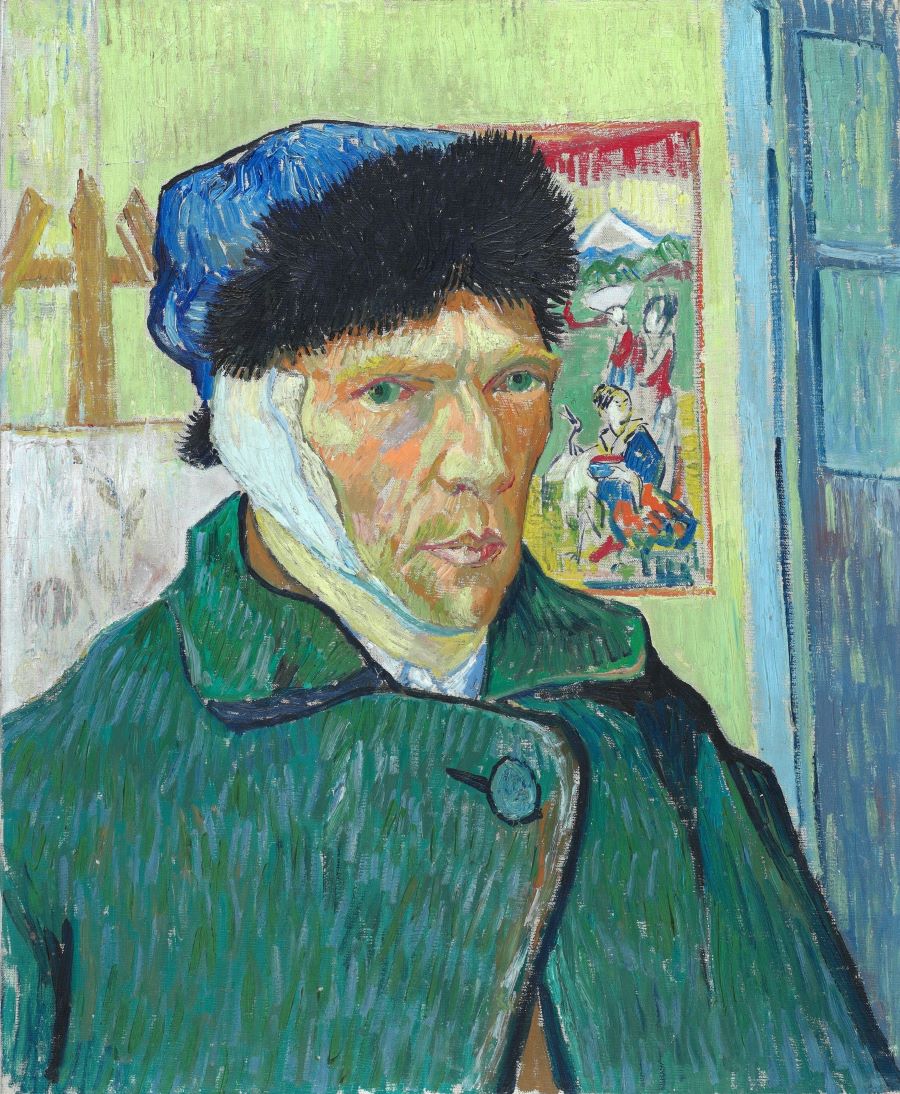
Over the course of his career, Van Gogh painted over 30 self-portraits, but the 1889 one is perhaps the most famous. Painted after he cut off his own ear, the painting shows Van Gogh with an introspective and thoughtful look. The swirling colors of the background reflect the artist's unstable mental state. It is not just a portrait, but a window into Van Gogh's soul.
Self-Portrait with Bandaged Ear is notable for its use of blues and greens, creating a cold and somewhat melancholy atmosphere. Van Gogh's signature swirling brushstrokes are clearly visible, especially in the background and clothing. Van Gogh's deep eyes in the painting seem to be looking straight at the viewer, creating a sense of intimacy but also mystery.
Wheat Field with Cypresses (1889)
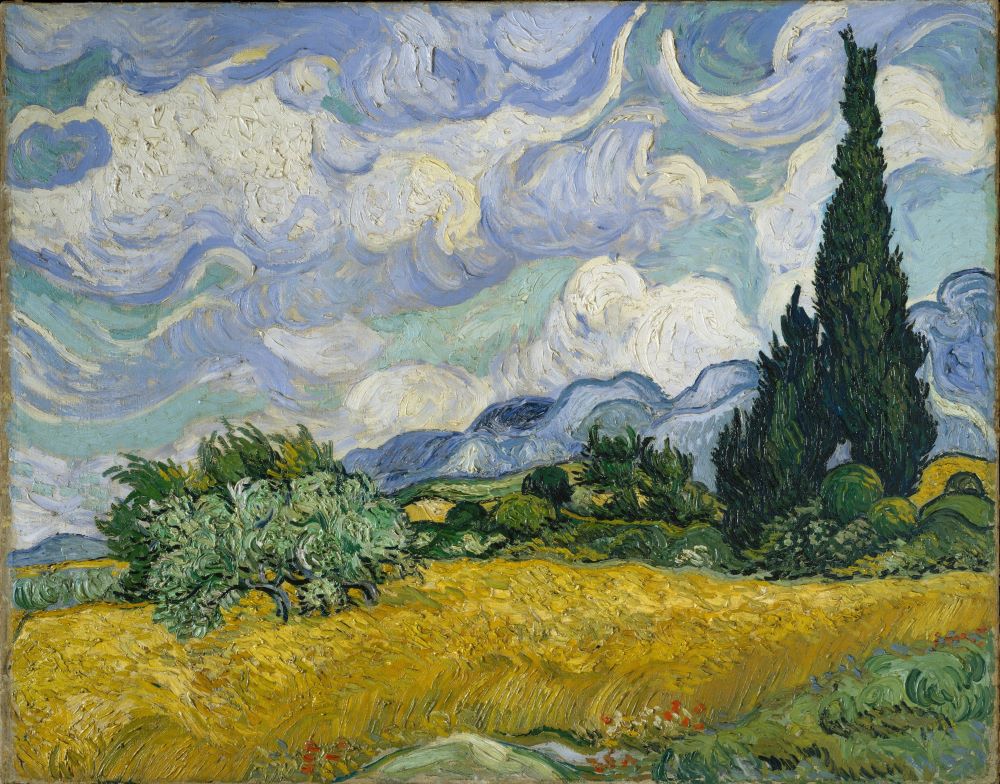
As the title suggests, this work depicts a landscape of a wheatfield in the South of France, with tall cypress trees reaching into the sky. Van Gogh used bright colors and strong brushstrokes to create a vibrant and lively painting. The combination of yellow, green, and blue creates a vibrant and energetic painting.
The brushstrokes follow the shape of the cypress trees, creating a sense of movement and liveliness. Wheat Field with Cypresses shows the magic and beauty of nature through Van Gogh's personal perspective. The sunlight and shadows create sharp lines on the wheat field, creating an open, vast space.
Wheatfield with Crows (1890)
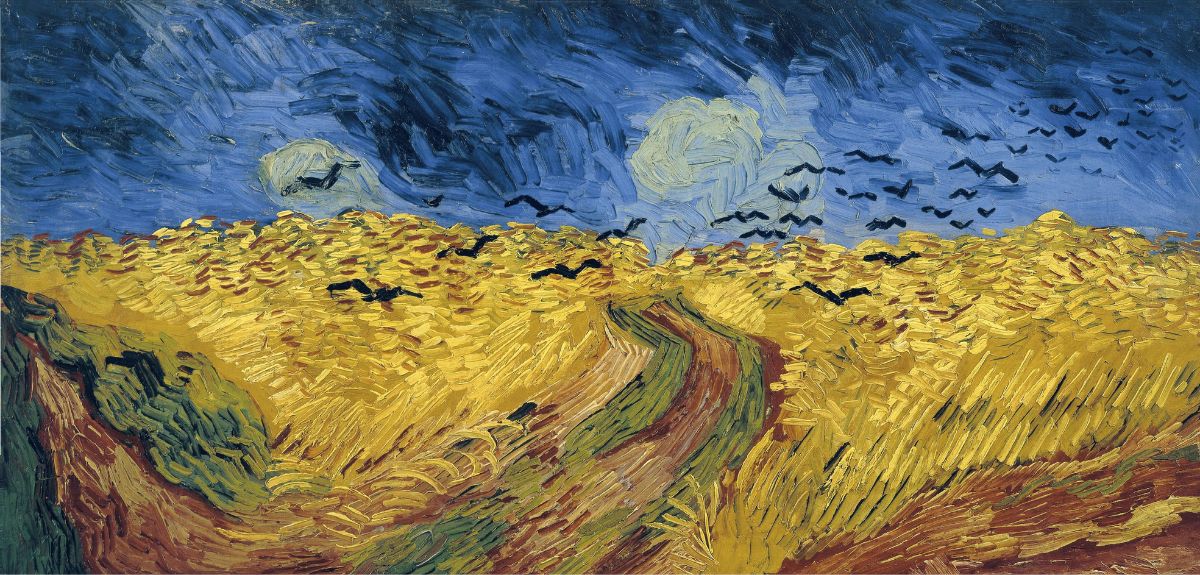
Before his death, Van Gogh created a number of paintings of the wheat fields around him. Among them, "Wheatfield with Crows" is the most famous work and also one of his darkest works, expressing a feeling of loneliness.
The road ends abruptly in the middle of the field, leading nowhere, surrounded by crows, creating a truly bleak image. The painting has been interpreted in many ways, including the idea that it is not an expression of anxiety or despair (according to Walther and Metzger). However, we cannot know exactly what the artist's motivation was.
This work, completed in July 1890, may have been Van Gogh's last work - although there are no letters or reports to confirm this. In fact, the painting was completed in the month that Vincent committed suicide, near or in the wheat field it depicts. Viewers can feel this sadness every time they look at the work.
Starry Night Over the Rhone (1888)
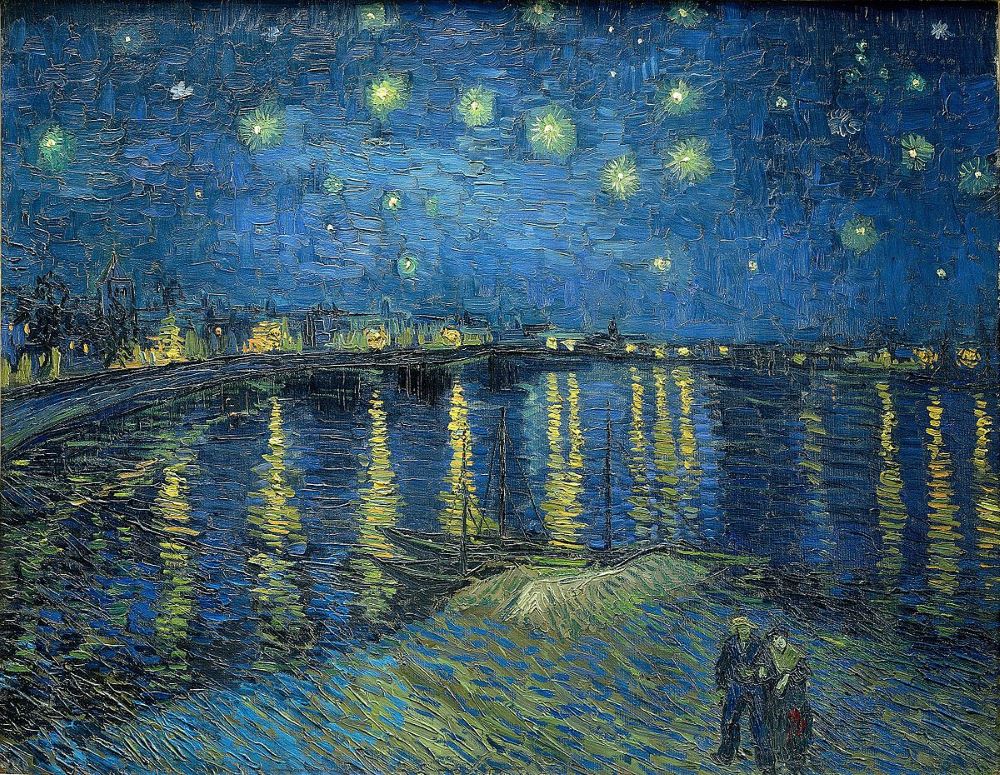
Vincent van Gogh's Starry Night Over the Rhone (1888) is a famous painting with a delicate composition and vibrant colors. It depicts a magical night scene on the banks of the Rhone River in Arles, France. This painting bears the mark of post-impressionist art with strong brushstrokes and bold blends of colors.
Accordingly, Van Gogh uses a rich color palette with deep blue tones of the sky and river, combined with warm yellow light from the lamps and stars. The contrast between blue and yellow creates a strong visual effect, highlighting the space and depth of the painting.
The process of creating this painting also contains many interesting stories. Van Gogh painted "Starry Night Over the Rhone" while he was living in Arles, during a period of inspiration but also a difficult time in his life. Arles was where Van Gogh hoped to establish a community of artists, and he invited Paul Gauguin to live and work with him.
During this time, Van Gogh often took night walks to find inspiration for his works. It was during these walks that he became fascinated by the beauty of the night sky and the reflection of light on the river, which gave rise to the idea for the painting.
Café Terrace at Night (1888)
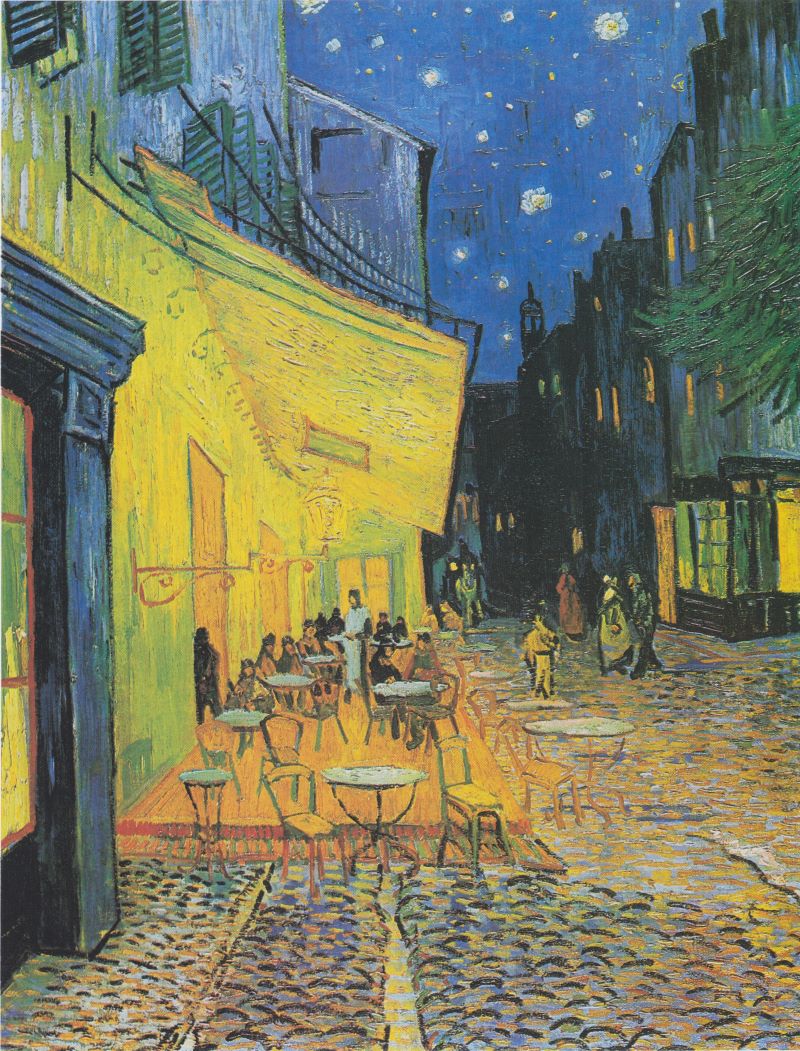
Café Terrace at Night (1888) by Vincent van Gogh is a colorful and vibrant painting depicting a night scene at a café in Arles, France.
The composition of the painting is cleverly arranged with the terrace of the café taking up most of the left side, where the warm yellow light from lanterns and electric lamps shines, creating a strong contrast with the deep blue starry night sky on the right side. The cobblestone path leads the viewer's eye deeper into the painting, where there are shadowy figures enjoying the evening.
The process of creating "Café Terrace at Night" is closely linked to Van Gogh's life in Arles. This is one of the first paintings he painted at night, using artificial light instead of natural light.
Van Gogh once wrote in a letter to his brother Theo that he enjoyed the way the night light transforms color and space, he wanted to express that in his work. He set up his easel outdoors and worked under the light of a lantern to complete this painting.
Almond Blossoms (1888-1890)
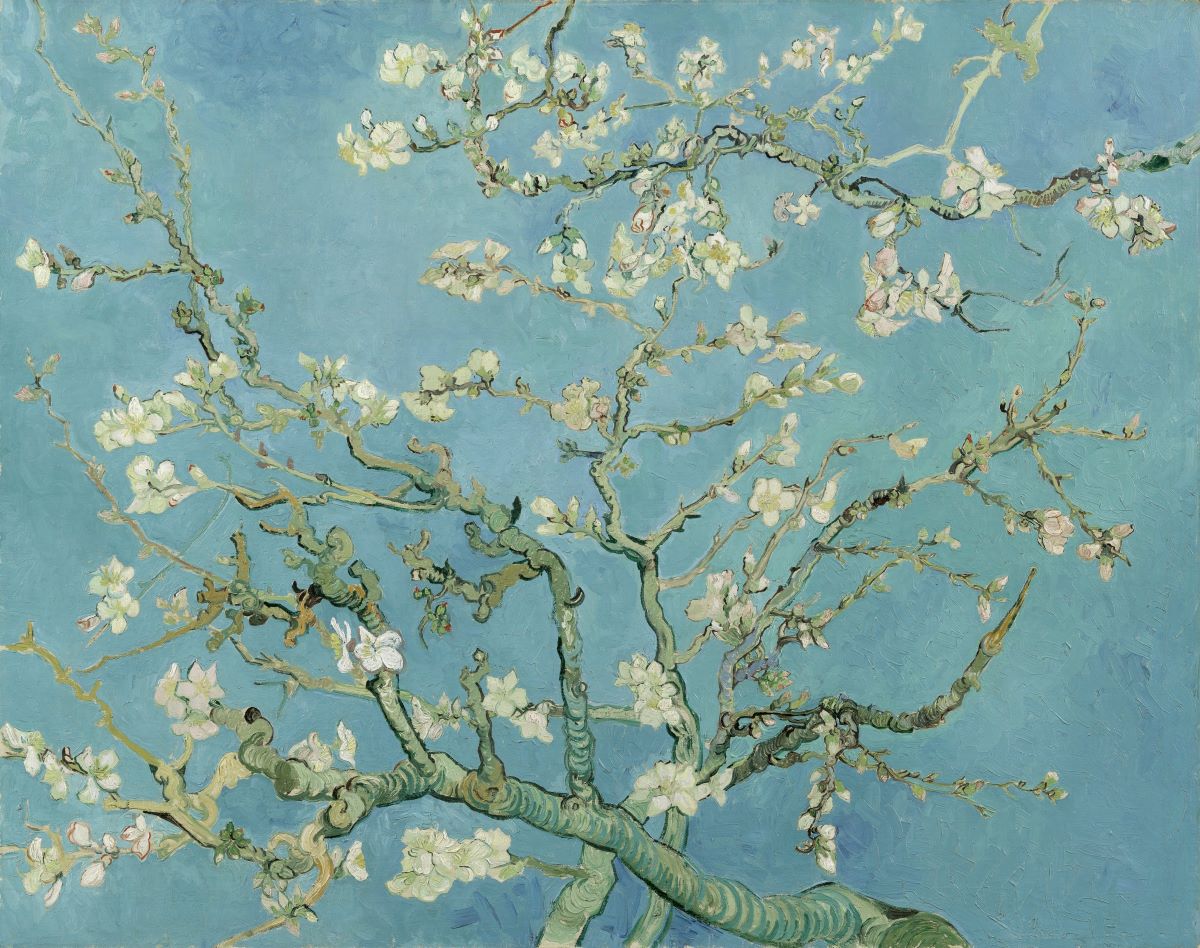
Vincent van Gogh's "Almond Blossoms" (1888-1890) is a masterpiece with a delicate composition and bright colors, depicting a branch of almond blossoms blooming against a blue sky.
The composition of the painting focuses on the pure white branches of almond blossoms, painted in meticulous detail. The soft and pure flowers seem to stand out against the clear blue sky, creating a striking contrast.
During his time living in the South of France, specifically in Arles, Van Gogh found endless inspiration from the natural landscape there. Arles, with its bright sunlight and blossoming trees, was described by Van Gogh as the "Japan of the South". He arrived there in March 1888, when the almond trees were in full bloom, and immediately began painting at an almost unprecedented pace.
A little-known fact is that Van Gogh was strongly influenced by Japanese art, especially Ukiyo-E woodblock prints. The style of "Almond Blossom" clearly shows this influence, especially from Hiroshige's "Plum Blossoms". Van Gogh painted this painting not only to honor the Japanese artist but also to express his admiration for Oriental art.
In particular, the most famous "Almond Blossoms" was created on the occasion of the birth of his nephew, the son of his younger brother Theo. This is one of Van Gogh's rare works expressing hope, joy, and serenity. In a letter to his brother, Van Gogh wrote that he was happy to hear of the birth of his nephew and wished that this painting would be a symbol of joy with new beginnings.
Irises (1889)
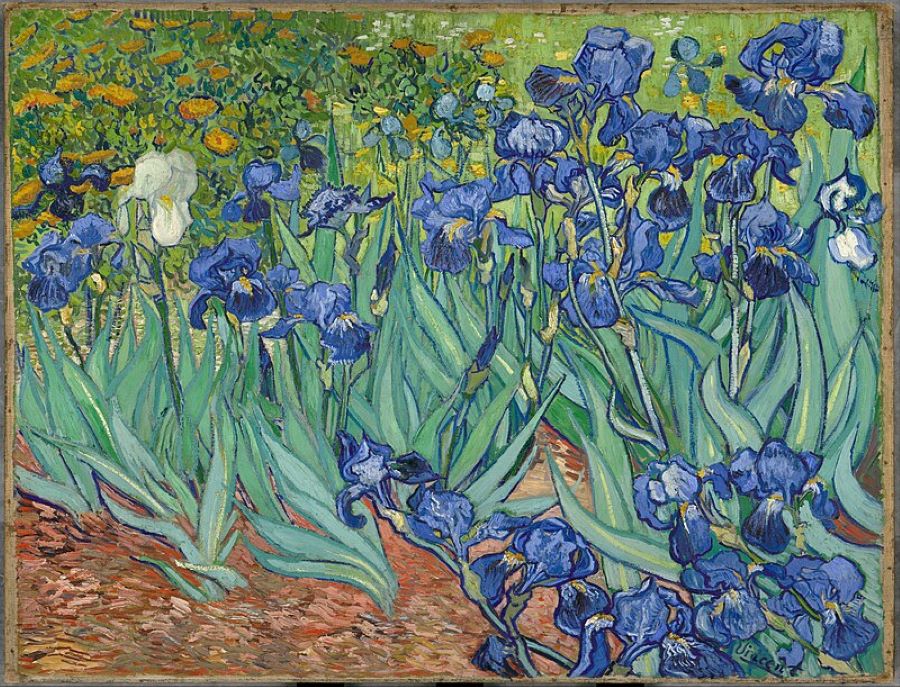
Van Gogh's "Irises" is a clear demonstration of his ability to create works of art of extremely high aesthetic quality. The painting is filled with light, vitality, and beauty of nature, with a touch of Japanese art, like "Almond Blossoms".
After being hospitalized in an insane asylum due to his poor mental health, Van Gogh immediately began working on this work. He considered painting as a "lightning rod" to help relieve his illness and spent a lot of time describing the flower garden at the Saint Paul-de-Mausole asylum.
It is conceivable that spending the day in the flower garden brought Van Gogh a certain serenity or peace, even if only temporarily. Van Gogh only considered "Irises" as a "training exercise" and did not appreciate it as a real work of art.
However, his younger brother, Theo, saw special value in this work and sent it to the Société des Artistes Indépendants exhibition, where it was exhibited together with "Starry Night over the Rhone".
The Potato Eaters (1885)

The Potato Eaters is still considered one of Van Gogh’s most famous paintings. Painted in 1885, earlier than many of the other works mentioned, the painting reveals the artist’s Dutch origins.
Heavily influenced by the artists of the Hague School, especially Jozef Israëls, Van Gogh tried to depict the reality of rural life: shabby, sometimes ugly, but realistic and full of affection in a family setting.
An interesting fact is that Van Gogh loved this work very much. In fact, two years after completing it, he wrote to his sister: "What I think about my own work is that the painting of the peasants eating potatoes that I did in Nuenen is after all the best thing I did."
Perhaps the rural theme and the process of making the painting clearly reflected Van Gogh's soul, and he was truly happy to complete the work that he considered one of his masterpieces.
Bedroom in Arles (1888)
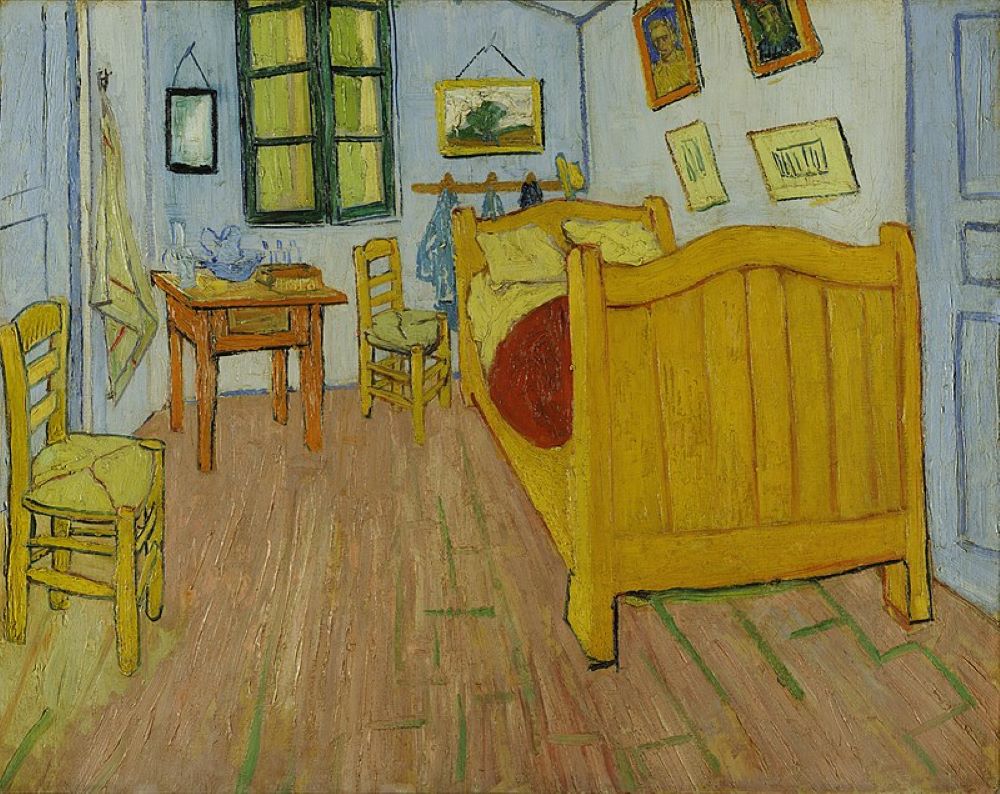
"Bedroom in Arles" - the name seems to be for only one painting, but in fact it is the common name for three almost identical works by Vincent van Gogh, currently displayed in prestigious art museums around the world.
Each version offers a unique perspective on Van Gogh's bedroom, where he returned after a hard day's work, and where he dreamed.
The special feature of the "Bedroom in Arles" trilogy lies in its simplicity and modesty in the way it is presented. Van Gogh focused on using color effectively to convey the atmosphere in the room.
This bedroom is located in the "Yellow House", which Van Gogh shared with his colleague Paul Gauguin. The closed door on the left leads to the spare bedroom, where Gauguin often slept.
The "Bedroom in Arles" was created during a period when Van Gogh was battling illness, forcing him to stay in bed for many days. It was during this time that the idea for the painting arose and was realized by Van Gogh.
An interesting detail for those who observe closely is the miniature portraits hanging next to the bed. The images of colleagues and close friends Eugène Boch and Paul-Eugène Milliet were painted by Van Gogh as a way to preserve intimate moments.
Enhance your expertise with Skilltrans through their curated selection of related courses. Please click on the course name below to learn more:
Cartoon Drawing For Absolute Beginners
You will learn how to draw cute cartoon characters. Also, you will learn how to draw simple cartoon backgrounds. We’ll start with the basics. For example whats the anatomy of our cute cartoon characters and what shapes we’ll use to draw them. Then we’ll jump into different facial expressions so that you can express emotion with your characters. Also different hairstyles, a lot of practice sheets, and many more.
Drawing and Colouring: Birds and Flowers (Art as Meditation)
Nature influences art in many we can't imagine art without nature. As it is the source of inspiration for every artist, its the best way to start learning art through nature. Its a kind of meditation in which we relate ourselves with the beauty of nature. When you indulge yourself in activities related to nature you feel calm and relaxed.
In this course you will learn to make beautiful leaves, flowers and exotic and beautiful birds which will not only enhance your painting.
Character Art School: Complete Coloring and Painting
Character Art School is a 6 week learn-anywhere video course where you learn to become adept at coloring and painting professional characters. I’ve hand-crafted the Character Art School: Complete Coloring and Painting course to be the only course you need, to learn all the core fundamentals and advanced techniques to coloring and painting characters well. If you’re an absolute beginner or you’re already at an intermediate level, the course will advance your current ability to a professional level. The course is a comprehensive 5 module guided video course, where the only limit to your progression is your determination and engagement in the rewarding assignments.
Conclusion
So you have admired Van Gogh's 16 famous paintings and listened to the stories behind the works. Vincent van Gogh's paintings are more than masterpieces of post-impressionism; they are windows into the artist's turbulent life, profound emotions, and unique vision of the world.
Hopefully, through this article, you have a better understanding of the life, career, and famous paintings of Van Gogh, one of the greatest painters of all time. Continue to explore and admire his wonderful paintings, to feel the creativity and strong artistic spirit through each stroke, each color.
If you want to learn more about the world of art, you can sign up for Skilltrans courses. A colorful world is waiting for you to explore.

Meet Hoang Duyen, an experienced SEO Specialist with a proven track record in driving organic growth and boosting online visibility. She has honed her skills in keyword research, on-page optimization, and technical SEO. Her expertise lies in crafting data-driven strategies that not only improve search engine rankings but also deliver tangible results for businesses.



